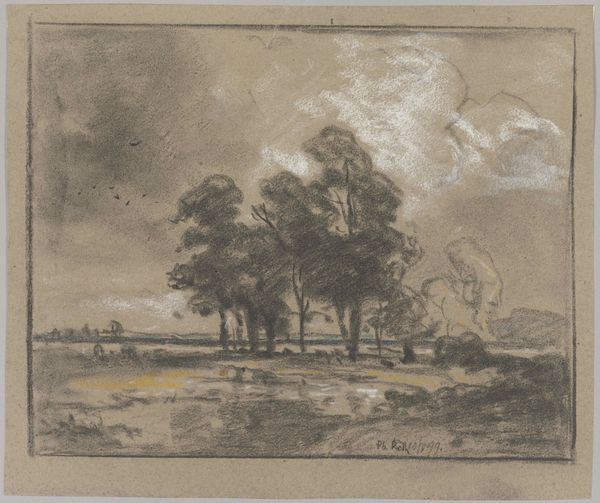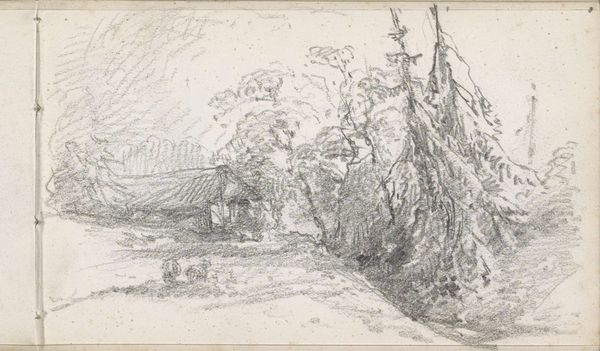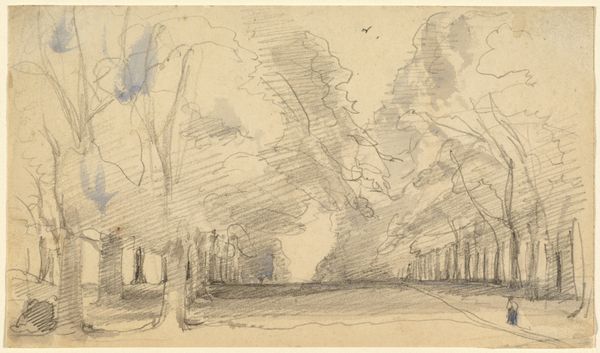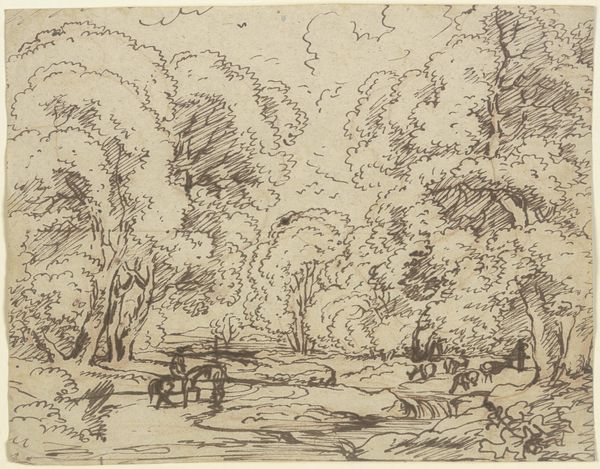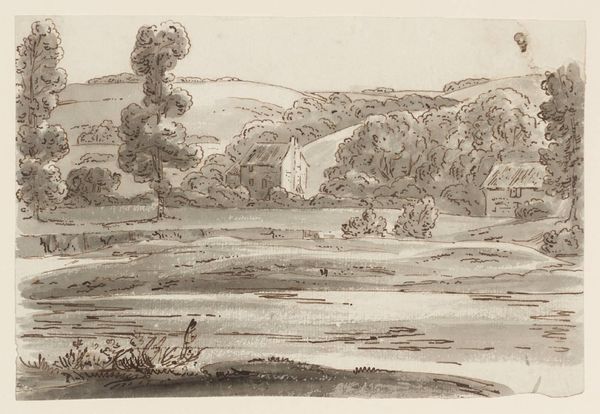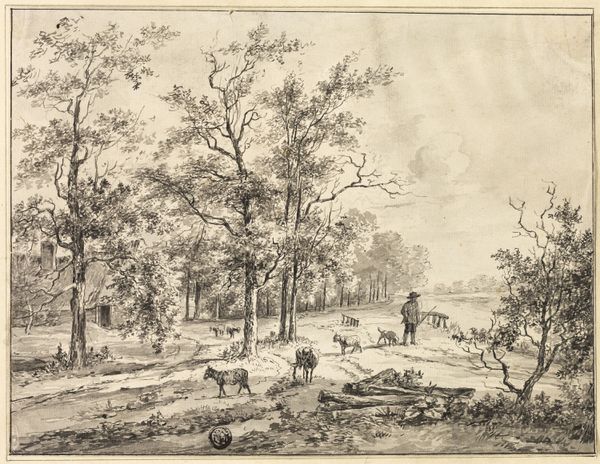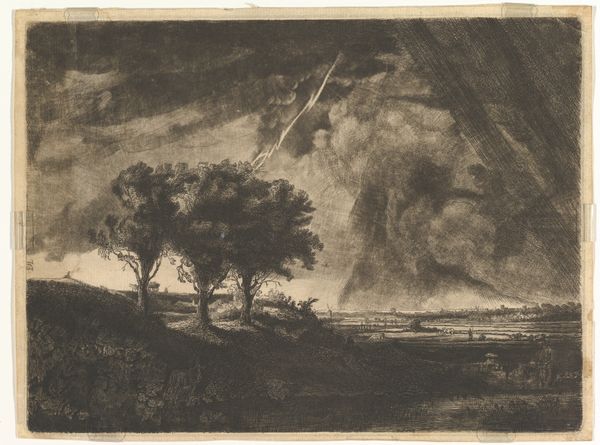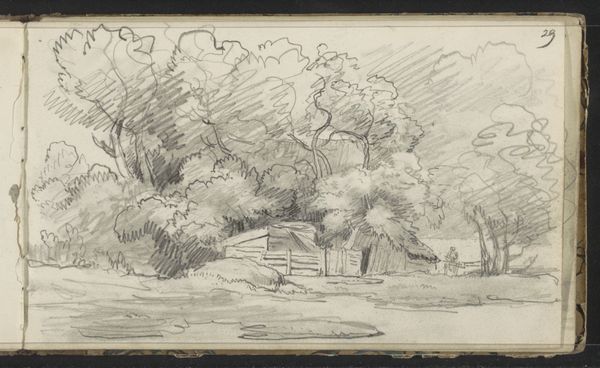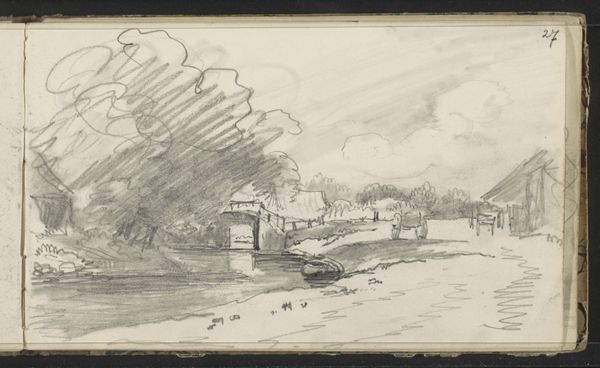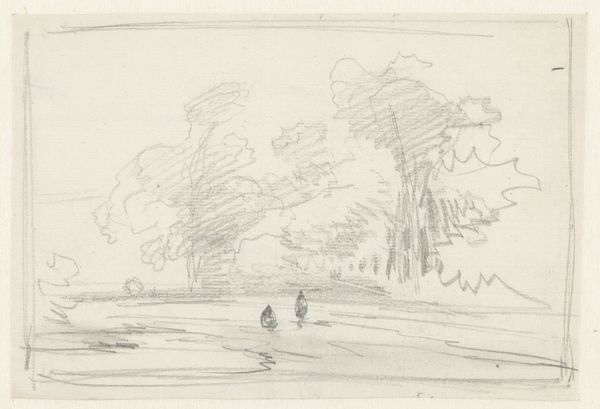
drawing, ink
#
drawing
#
pen sketch
#
landscape
#
ink
#
15_18th-century
Copyright: Public Domain
Curator: Here we have a drawing entitled "Weidelandschaft mit Küchen und rastenden Wanderern" which translates to "Pastoral Landscape with Kitchens and Resting Travelers", rendered in ink by Franz Kobell. Editor: It immediately strikes me as a moment of tranquility. A very classically staged pastoral scene. The tones are muted and calming, giving a certain quietness to the composition, but it seems…almost artificial? Curator: Precisely. That seeming artifice, that constructed tranquility, speaks volumes about the role of landscape imagery during periods of political unrest, as an idealized retreat from socio-political realities. One could even interpret it as a form of escapism. Kobell gives us resting wanderers, cows, but also an extremely specific type of cultivated ideal, a symbolic staging, if you will. Editor: Looking at the drawing through an iconographic lens, the cows themselves become meaningful. They are symbols of nourishment and prosperity, deeply intertwined with a collective understanding of the land's bounty. This is more than just a pretty scene. Each tree, each figure placed seemingly at random becomes a carrier of meaning, contributing to the broader narrative of stability and abundance in the land. Curator: And the resting travelers can then become emblematic of the artist’s contemporaries looking for respite from war and the rise of industrialization. Considering these historical pressures contextualizes Kobell's artistic choice; this is, in fact, more about projecting societal dreams than presenting actual scenes. Editor: Exactly! When we look closer, the stylized rendering of natural forms such as the fluffy masses that create the tree's foliage—resemble clouds of idealized notions of natural existence. We can interpret them less as attempts at precise botanical illustration, and more as emblematic visualizations of cultural ideals around rurality. The drawing invites one to pause, contemplate not just nature, but cultural aspirations towards it. Curator: The way the medium, ink, contributes to the pen sketch's message gives a good foundation for us to analyze through both visual symbolism and critical analysis in the historical context. It truly illuminates not just Kobell’s talent, but also an approach to engaging society that can often challenge preconceived ideas of landscapes and their emotional effect. Editor: Yes, analyzing landscape representations from visual cues while factoring in social influences gives us a powerful dialogue, going beyond aesthetic surface appearances to reflect profound cultural meanings that often speak across time.
Comments
No comments
Be the first to comment and join the conversation on the ultimate creative platform.
